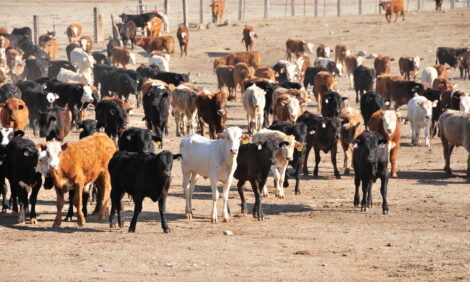



European Parliament Draft Report on Food Labeling
EU - The European Parliament's (EP) Environment, Public Health and Food Safety Committee recently released its draft report on the European Commission proposal for a new food labeling regulation.The EP Committee deletes the proposed 3mm minimum font size requirement for all mandatory information on food labels and amends the proposed requirement to include the nutrition declaration on the front of the package.
Legislative Procedure
The European Parliament’s (EP) Environment, Public Health and Food Safety (ENVI) Committee recently released its draft report on the European Commission proposal for a new food labeling regulation. This is the very first step in the complex co-decision procedure under which both the EP and the Council have to come to an agreement on the proposed rules. The co-decision procedure starts with parallel discussions in both institutions but the Council can only act once the EP has delivered its opinion (EP report) on the proposal. The EP can accept the proposal, propose amendments or reject it. A table explaining the codecision procedure step-by-step is given at the end of the report.
For detailed information on the Commission proposal see GAIN report E48020. The food labeling proposal was notified to the WTO under the TBT Agreement (WTO Notification G/TBT/N/EEC/191). A reply from the Commission to the U.S. comments on the proposal was sent on 4 December, 2008.
EP Report
Minimum Font Size
The EP Committee deletes the proposed 3mm minimum font size requirement for all mandatory information (except the energy content declaration) based on the argument that font size alone does not guarantee the legibility of a text. Instead the EP proposes to define legibility as “text written, printed, embossed, marked, engraved, stamped, etc. in such a way that a normally-sighted consumer can understand the substance of food labels without using optical aids; legibility is contingent on the font size, the typeface, the stroke width, the spacing between letters, words and lines, the width-height ratio of the letters and the degree of contrast between the print and the background.” The Commission should draw up binding rules on the legibility of mandatory food information after consultation with stakeholders.
As the proposed 3mm font size has met with strong opposition from industry, the Commission has indicated that it will revisit the issue and come up with a more detailed definition. However, although the Commission agrees with the EP’s proposed legibility criteria, it insists on including a fixed font size figure in the final text.
Nutrition Declaration
The EP Committee amends the proposed requirement to include the mandatory nutrition declaration on the front of the package. Only the energy content (calories kcal kJ) should be given in the bottom right hand corner on the front of the package, in a font size of 3mm and surrounded by a rectangular border. The amount of energy and nutrients must be given per 100g or 100ml and may be expressed per portion provided the number of portions contained in the package is stated and that the portion sizes are realistic. The Commission should develop guidelines concerning the indication of realistic portion sizes. Details on nutrients and ingredients providing the energy content should be given in a table format and include, in the following order: energy, protein, fat (with specific reference to saturates), carbohydrates (with specific reference to sugars and starch), sodium from salt.
Frozen Foods
The EP Committee proposes the mandatory indication of the “date of manufacture” on all frozen foods to enable consumers to recognize frozen products which have been stored for too long.
Origin Labeling
In the Commission’s proposal, country of origin labeling remains voluntary for most products unless its absence misleads consumers. For poultry and meat, other than beef and veal, the Commission proposes that the country of origin may be given as a single place only where the animals have been born, reared and slaughtered in the same country. In other cases, information on each of the different places of birth, rearing and slaughter must be given. The EP Committee’s amendment proposes that the indication of the country of origin or place of provenance may be given only as the place where animals have been reared and/or fattened, i.e. not the place of breeding, slaughter, processing or packing. Alternatively, each of the different places of birth, rearing, breeding, slaughter, processing and packing may be given.
Timetable
The dates given in the co-decision timetable below are indicative dates. As a new Parliament will be elected in June 2009, the first reading vote on the Commission’s food labeling proposal may be delayed until the new Parliament sits in plenary session in the fall of 2009.
Further Reading
| - | You can view the full report by clicking here. |
TheCattleSite News Desk


